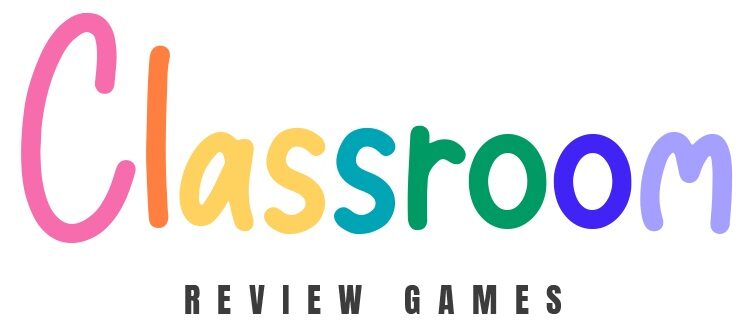14 Fun Literature Review Games for Students
Review games in literature classes can turn the study of texts, characters, themes, and literary devices into an interactive and engaging experience. These games encourage students to think critically about the material, work collaboratively, and apply their knowledge in creative ways. Below, we explore a variety of games suited for literature review, detailing the necessary materials and instructions for each.
1. Character Bingo
Materials Needed:
- Bingo cards with names or traits of characters from the literature studied
- Markers or chip
- A list of quotes, actions, or descriptions related to characters for the teacher to call out
How to Play:
In this adaptation of Bingo, cards are filled with characters’ names or key traits. The teacher calls out quotes, actions, or descriptions from the text, and students must identify the character and mark their card accordingly. The first student to get a row, column, or diagonal and shout “Bingo!” wins.
2. Quote Match
Materials Needed:
- Cards with quotes from the literature on one set and the corresponding characters or contexts on another set
How to Play:
Spread out all cards face down. Students take turns flipping two cards at a time, attempting to match a quote with the character who said it or the context in which it was said. This game tests students’ recall and understanding of key moments in the texts.
3. Literary Terms Jeopardy
Materials Needed:
- A Jeopardy board with categories related to literary devices, themes, plot points, and characters
- Questions for each category
How to Play:
Students choose from categories like “Metaphors,” “Plot Twists,” or “Dynamic Characters,” with each question assigned a point value. Correct answers earn points, and the student or team with the most points at the end of the game wins. This format is great for a comprehensive review of literary elements.
4. Story Sequence Scramble
Materials Needed:
- Cards or strips of paper with key plot events from a text
How to Play:
Students work individually or in teams to arrange the cards in the correct narrative order. This game reinforces understanding of the plot structure and key events, encouraging students to discuss and justify their choices.
5. Literary Pictionary
Materials Needed:
- Whiteboard and markers or paper and pencils
- Cards with literary terms, characters, themes, or plot elements
How to Play:
Players draw representations of the literary terms, characters, themes, or plot elements written on the cards, while their teammates try to guess what they are drawing. This game encourages creative thinking and helps solidify students’ understanding of literary concepts.
6. Theme Park
Materials Needed:
- Index cards with themes from various texts
- A timer
How to Play:
Students draw a card and have a set amount of time to explain the theme and how it is developed in the text, citing specific examples. This can be played in teams, with points awarded for clarity, accuracy, and the ability to provide detailed examples.
7. Character Hot Seat
Materials Needed:
- A list of characters from the literature studied
How to Play:
One student sits in the “hot seat” and assumes the role of a character from the texts studied. The rest of the class asks questions, and the student in the hot seat must answer as they believe the character would. This game deepens character understanding and encourages empathy and perspective-taking.
8. Plot Twist Challenge
Materials Needed:
- Cards with plot points from various texts
How to Play:
Students draw a card with a plot point and must create an alternative plot twist or ending based on that point. This encourages creative thinking and a deeper understanding of narrative structure and character motivation.
9. Literary Speed Dating
Materials Needed:
- Character profiles from the literature studied

How to Play:
Students assume the identities of characters from the texts and engage in short “dates” with other characters. They discuss their backgrounds, conflicts, and relationships as outlined in the texts. This game promotes character analysis and understanding of character interactions.
10. Vocabulary Crossfire
Materials Needed:
- Flashcards with vocabulary words from the literature
- Definitions, synonyms, or sentences using the vocabulary words
How to Play:
Students are divided into two teams, and one member from each team draws a card. The first to correctly define the word, provide a synonym, or use it in a sentence wins a point for their team. This fast-paced game enhances vocabulary knowledge related to the texts.
11. Literary Maze
Materials Needed:
- Maze templates with literary questions or prompts along the paths
How to Play:
Students navigate through a maze, answering literature-related questions at certain checkpoints. Correct answers allow them to proceed, while incorrect answers might lead them down a dead end. This game is a fun way to review various literary elements and text-specific questions.
12. Fictional Family Tree
Materials Needed:
- A list of characters from one or more texts
- Paper and pens or a digital tool for creating family trees
How to Play:
Students create a “family tree” that shows the relationships between characters from the literature studied. This can include literal family connections, as well as thematic or symbolic relationships. This exercise helps students visualize and understand character connections and dynamics.
13. Synonym Synthesis
Materials Needed:
- Cards with complex vocabulary from the texts
- Cards with synonyms or simpler explanations
How to Play:
Students match vocabulary words with their synonyms or simplified explanations, promoting a deeper understanding of the texts’ language and enhancing their vocabulary.
14. Book Cover Redesign
Materials Needed:
- Art supplies (paper, markers, colored pencils, etc.)
- Key themes, symbols, or motifs from the literature
How to Play:
Students redesign the book cover of a text studied in class, incorporating key themes, symbols, or motifs. This artistic activity encourages students to think about the visual representation of literary elements and themes.
These literature review games transform the study of texts into an interactive learning process that engages students in critical thinking and collaborative learning. By integrating these games into the literature curriculum, teachers can foster a deeper understanding and appreciation of literary works in their students.
